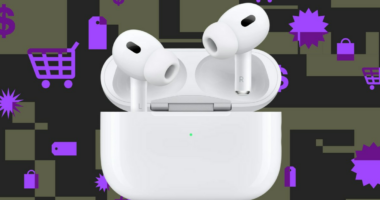Share this @internewscast.com
In today’s digital age, the ease with which algorithms serve us music has sparked a fair share of criticism. However, the real issue with algorithm-driven music discovery lies in how passive our listening habits have become. It’s incredibly simple to hit play and let a string of code dictate our listening journey, whether it’s by generating a station based on a favorite artist, diving into Discover Weekly, or letting Apple Music endlessly autoplay after an album concludes.
This lack of active engagement from listeners often reduces music to mere background noise. Studies indicate that younger generations are uncovering new artists at a slower pace than those before them, and this trend is closely linked to their reliance on algorithms. So, how can one intentionally discover new music?
One of the most straightforward and time-honored methods is through music journalism. There’s an abundance of high-quality music critiques and articles out there; it’s just about finding the one that resonates with you.
Although Pitchfork may no longer be the edgy newcomer, it remains a dependable source for uncovering fresh music. It skillfully balances coverage between mainstream hits and indie gems, featuring artists ranging from pop icons like Taylor Swift to avant-garde electronic creators such as Feeo.
If Pitchfork feels a bit too mainstream for your taste, you might explore Hearing Things, an independent outlet founded by former Pitchfork staff. Alternatively, you can turn to Stereogum, a hallmark of the early music blog era, which has recently made a comeback.
Bandcamp Daily also offers a wealth of resources. Beyond providing an album of the day and a roundup of essential weekly releases, its editorial section features monthly genre-specific guides to new music in hip hop, metal, and even field recordings. If niche cassette labels are your thing, there’s a column for that. Interested in a guide to the prolific vaporwave label Geometric Lullaby? They have you covered.
Just like everything else on the internet, music has its influencers. Chief among them is Anthony Fantano, who the New York Times called “the only music critic who matters (if you’re under 25).” Fantano is an institution at this point. His YouTube channel, The Needle Drop has over three million subscribers, and his secondary news and commentary channel has over two million.
I would also be remiss if I didn’t call out Amoeba Records and its What’s in My Bag series, where celebrities and musicians go on a shopping spree in the legendary record store, talk about what they decided to buy, and why.
Sort of straddling the line between traditional music media and influencers is the world of Substack. There are tons of newsletters out there that serve up artist interviews, curated playlists, and deep dives into bands’ discographies.
Flow State delivers two hours of instrumental music every week. Think of it as lo-fi beats to study to, but much more interesting and varied. Active Listening features beautifully written pieces on jazz, hip-hop, soul, and more. While there are plenty of less recognizable names populating Active Listening, it also offers new takes on more well-known works like Mos Def’s Black on Both Sides, with a strong personal perspective.
Just don’t go too crazy with the Substack subscriptions if you want it to actually be useful for music discovery, as things can get noisy very quickly.
Traditional radio can still be a solid source of new music if you turn away from large commercial stations owned by iHeartRadio and the like. Your local college station is a good place to start, but there are other non-commercial independent stations out there, like WFMU in New York, that steer clear of your standard pop fare. WFMU bills itself as a “freeform” station that plays classic jazz, scuzzy punk, and experimental sound collages with equal regularity.
In addition to traditional terrestrial stations, there are streaming internet stations. NTS Radio is one of the best, in my opinion. The site makes it easy to follow the DJs and shows you like, whether that’s Astrid Sonne’s monthly ambient showcase, or Underground & Black with Ash Lauryn, which focuses mostly on deep house. The station also often has sets from guest artists like Disiniblud and Danny Brown. One of the best ways to find new musical rabbit holes is to learn about your favorite artist’s favorite artist.
This is the section that has the greatest potential to spiral out of control, but you should become a fan of labels, not just artists. When I was in high school and college, I followed Matador, Sub Pop, Def Jux, and Grand Royal with almost religious fervor. Sadly, Def Jux and Grand Royal are now defunct, but Matador and Sub Pop are still going strong.
If you’re into heady underground rap, there’s Backwoodz Studioz, home to Akai Solo, Billy Woods, and Armand Hammer. For fans of ambient and experimental electronic music, Leaving Records puts out albums from Arushi Jain, more eaze, and the legendary Laraaji.
Ultimately, record labels are curators, and the best ones have a distinct identity. That doesn’t necessarily only mean releasing death metal records (though it can). It means building a vibe and a particular point of view that unifies the artists under a single umbrella. It might not be immediately obvious what unites Aphex Twin, Yves Tumor, and Nala Sinephro. But what all the artists on Warp share is a relentless willingness to push the boundaries of their chosen genre, while still abiding by its broad traits.
This is the broadest umbrella here because it can cover so many different things, but easily the best way to find new and interesting music is just to connect with other people who share your tastes. This can be as simple as getting recommendations from friends or an older sibling. (Or, if you’re trying to stay on top of things as you get older, a younger sibling.) But there are plenty of online communities for getting music recommendations.
Genre-specific subreddits are a decent starting point, but Reddit can be messy. In general, the noise-to-signal ratio on social media is quite high, but Perfectly Imperfect, which is dedicated specifically to recommending things (including music), manages to cut through the noise pretty effectively.
Discord is another great source. Many artists have fan Discord servers, and the people there are more than happy to share music they think fellow super fans will like. But don’t discount servers that aren’t specifically about music. I’m on several, for things like modular synth nerds and horror writers, that have dedicated channels for making music recommendations.
Lastly, go see live music. Go see a band you know, but make sure you get there for the opener. This is how I discovered The Hold Steady shortly after Almost Killed Me came out. They opened for The Wrens at Bowery Ballroom and went on to release two of my favorite records of the 2000s. So don’t show up late just because you’ve never heard of the first band on the bill.








